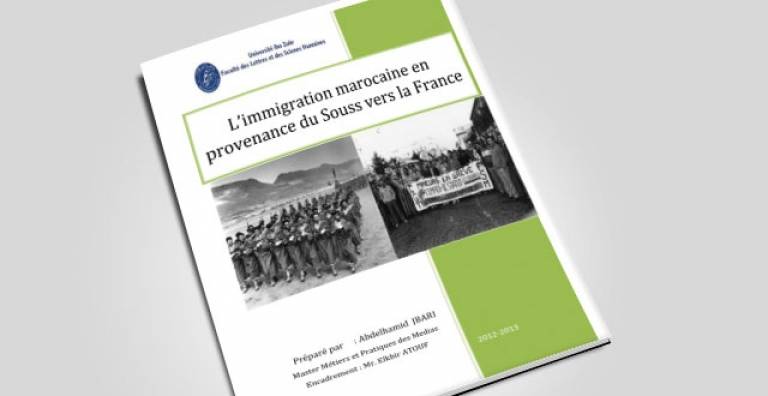Prepared in 2012-2013 in the framework of a Master Thesis in the Faculty of Arts and Humanities of the University Ibn Zuhr Agadir, the following report is by Abdelhamid Jbari made under the following title "Moroccan immigration from the Souss region to France."
The Moroccan immigration to France does not date from the recent past. It goes back to 1910, before the introduction of the protectorate, which marked the beginning of the migratory movement of Moroccans to the country considered ' the first destination for historical, political, cultural and economic reasons. ''
Indeed, the phenomenon of Moroccan migration to France was clearly triggered with the beginning of the First World War: "During the Great War (1914-18), recruitment by the French colonial authorities of tens of thousands of soldiers and workers was the trigger of the migratory flows that has not stopped since. "
However, this' militarized migration '' who had a great impact on the Moroccan population was followed by another enhanced recruitment during the 39-45 war; "During the first and second world war, a lack of workforce in France led to the active recruitment of tens of thousands of men for factories, mines and the French army ... during the First World War at least 80,000 men were recruited as soldiers or as “colonieux” workers and during the Second World War, between 80 and 90,000 men. "
For several reasons, according to experts, these successive waves of emigration up until the sixties were manipulated and considered as a management tool for a socio-political situation "So we are in the presence of a scheduled immigration".
The region of southern Morocco (Souss) benefited before any other region from favoring towards immigration, while depriving other areas of departures. The indigenous Soussi presented the majority of Moroccans present in France for a large period that began early in the twentieth century to the 1970s ...
To read the full study, click here

